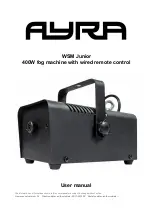
powerquilter
™
1600 Quilting Machine User’s Guide
| 21
Drawing The Bobbin Thread to the Top of the Quilt
1. After threading the machine, plug it in and turn on the power. Place quilt sandwich under hopping foot.
2. While firmly holding the tail of the needle thread with the left hand, choose one of the following
methods to cycle the needle through one full rotation to bring the bobbin thread to the top of the quilt.
A. Foot Pedal Method.
LIGHTLY
tap the foot pedal to make the needle go down. Then LIGHTLY tap
again to bring the needle up.
B. Needle Up/Down Button Half-Stitch. Find the Needle Up/Down Button in the center of the color
touch-screen main display. Press once to cycle the needle down. Press again to cycle the needle
back up.
C. Needle Up/Down Button, Full-Stitch. Find the Needle Up/Down Button in the center of the color
touch-screen main display. Press and hold briefly to cycle the needle through one complete stitch
cycle (down and back up).
3. Pull the fabric 3-4 inches away while holding the needle thread.
4. Bobbin thread will pull up and through to the top, allowing you to grasp the loop and pull it to the
desired length.
Checking and Adjusting Bobbin Case Tension
The bobbin case tension is the foundation tension
for the entire machine. To test that bobbin tension
is correct, hold the bobbin case in the palm of
your hand with the open end facing up. Wrap the
thread around your index finger and lift the bobbin
case from your hand. While gently moving the
finger front to back (not up and down, which is not
consistent), the bobbin case should slide slowly
down the thread, like a spider on its web.
The small screw in the center of the tension spring
is where the adjustment is made. Turn clockwise to
tighten and counter-clockwise to loosen the bobbin
case tension. Make very small adjustments.
Check
the bobbin tension every time a new bobbin is
inserted�
Tighten Bobbin Case Tension
The
bobbin case tension is
TOO LOOSE
if it will not lift up onto its side. Turn screw clockwise to tighten.
The bobbin case screw requires very small adjustments. Think of the “tick of a clock”. Adjust, then check.
Adjust and check again.
















































